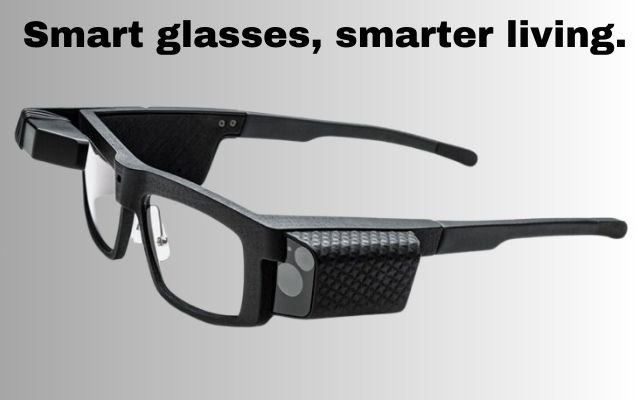Eyes on the Prize: Smart Glasses and the Future of Tech
Explore the future of tech with smart glasses, from AI integration to immersive experiences. Discover the possibilities ahead!

Smart glasses are becoming popular in tech. Over the past year, I’ve gotten more interested in them, and I want to share what I’ve learned to help others who are new to the technology understand what smart glasses are and what they can do.
Table of Contents
One Size Doesn’t Work for Everyone
Naturally, I read through a number of reviews when I initially started researching smart glasses in an effort to determine which ones offered the most value for the money. I came across numerous “top 5” lists, but it was difficult to determine which glasses were actually the finest. Many reviews were sponsored, making the descriptions sound overly positive. Plus, these lists often mixed very different types of glasses without explaining what each one was best for.
With the growing hype, it’s clear that every tech brand wants to join the smart glasses trend but not all of them are the same. As I researched more and tested different models (especially at CES 2024), I realized that each type of smart glasses is designed for different needs and uses.
A Simple Structure Emerged
Since I like to simplify concepts, I have developed a five-level framework for comprehending smart glasses.
Framework is based on levels of visual immersion, making it easy to categorize different types of smart glasses and highlight them.
It covers a range from basic Bluetooth-enabled glasses to VR/AR/MR headsets. While I don’t consider VR/AR/MR headsets to be smart glasses, they add valuable context and fit just above smart glasses in immersion level. This framework can help anyone interested in smart glasses understand the full range of options.
Level 0 — Basic Smart Glasses for Phone Accessories & POV Camera Glasses
Are these glasses truly “smart”? Maybe not but they’re a first step in adding tech beyond simple vision.
These basic Bluetooth glasses have been around for a while. In fact, I joke that I’ve had Meta’s Ray-Ban Stories long before they were released, thanks to some early “spy glasses” I bought to test out.
Bluetooth glasses come with a microphone and open-ear speakers, making them a hands-free phone accessory for calls—more stylish than a traditional Bluetooth earpiece, though that’s up to personal taste.
On the other hand, spy camera glasses are excellent for documenting memories because they can take first-person pictures & movies. Naturally, though, privacy is always a factor to take into account when using these.
Level 1 — Smart Glasses with AI & Style
This level is where “smart” becomes real. These glasses don’t have displays but they offer voice-activated AI assistants.
Two popular models here are Ray-Ban Stories and Amazon Echo Frames.
- Ray-Ban Stories include a camera and an AI interface. Though I haven’t tried them myself, they seem ideal for influencers capturing POV shots. They look stylish, but the AI’s usefulness is still unclear.
- Amazon Echo Frames bring Alexa to your glasses. Again, I’d look into them more before buying, as their value depends on how much you use Alexa.
Both come in multiple styles, making them fashion-friendly too. Another option, Nuance Audio by EssilorLuxottica also offers a stylish look and works as a hearing aid, though it’s uncertain if it connects to an AI.
Level 2 — Smart Glasses with Built-In Display
Smart glasses that have transparent screens & frequently use waveguide technology to project images straight into your field of vision are included in this category.
These displays show information in front of you without blocking your surroundings, making them great for productivity, not entertainment. You can wear them like regular glasses & when the screen is off, it’s invisible. However, the screens are usually small, and adding a large screen is expensive and tricky.
For things like displaying emails, notifications or navigation without requiring you to check your phone, these glasses are helpful. They are particularly useful for work in areas like maintenance, where technicians can browse instructions or receive hands-free remote support.
Some models, like the Vuzix Shield, have monochrome displays, and a few only show information in one lens. Head-mounted displays are also part of this category. These attach to regular glasses and are popular with professionals like surgeons, offering a small, adjustable display that won’t interfere with normal vision.
Level 3 — Virtual Screen Smart Glasses
This level of smart glasses has great potential for everyday consumers.
I own a pair of Rokid Max glasses, and I’ve been happy with them. They use prisms to redirect light, creating a large, high-resolution screen (up to 215 inches) right in front of you. While the front of the glasses is thick, they effectively act like a portable movie theater.
Instead than having computers integrated within them these glasses connect to computers or phones to run software. Because they can be used with any device that has an HDMI or display connector, they are portable and adaptable.
They provide a good level of immersion, although not as intense as virtual reality (VR) headsets. They’re designed for entertainment and productivity. For instance, you can watch Netflix on a big screen while commuting or use them for work by connecting to a mini-computer.
I regularly use my Rokid Max for movies and productivity tasks, and I find them practical. They are priced around $399, which is more affordable than many VR systems, making them appealing for casual entertainment.
However, one drawback is that the lenses are not clear; they have a dimming feature but can’t be used like regular glasses. This makes them less practical when not in use. If a model could offer clear lenses, it would likely compete well with other smart glasses on the market. Additionally, design of the glasses can obstruct your view above the horizon, requiring you to tilt your head back to see.
Level 4 — Smart Glasses as Augmented Reality Devices
I initially thought the XReal Air 2 Ultra should be in the previous category with level 3 glasses. However, I realized they are actually better. In my experience, they are the best smart glasses I’ve tried. They offer a wide view, and their virtual screen stays fixed in space, which is great for gaming since a moving screen can be frustrating.
The XReal Air 2 Ultra also supports hand tracking, making it easy to interact with virtual objects, and it has some augmented reality (AR) features.
I plan to use these glasses regularly, but their success will depend on developers creating apps that take advantage of their capabilities, as they can do more than just play Netflix. Rokid is working on a competing product, but it hasn’t been announced yet. For now, the XReal Air 2 Ultra is the standout in this category.
Note: Their lenses are still too dark for all-day wear.
Level 5 — Headsets for VR, MR and AR Experiences
I’m not here to give a full review of the Quest 3 or the new Apple Vision Pro. Instead, I want to explain why someone might choose smart glasses over a headset.
Overall, VR/AR/MR headsets provide a better experience when it comes to immersion and entertainment quality, but they can be bulky. Smart glasses serve a different purpose and fit into different situations.
The main advantage of smart glasses is their portability; they’re small, easy to carry, and can be used quickly. Plus, you can still see your surroundings while wearing them, which isn’t possible with VR headsets.
Would I use a Quest 3 on the bus or at a restaurant? Probably not. But I use my Rokid Max in those situations all the time.
I’ve also seen people who don’t care much about VR/AR/MR find value in the Rokid Max. Not everyone wants an intense experience; some just want to watch a show casually.
Conclusion on Smart Glasses
I’ve learned that there’s a place in the market for all types of smart glasses, depending on what users need.
For me, the XReal Air 2 Ultra is the best option out there. I’m in touch with Rokid, and they hinted that new products are coming soon which is exciting because I really enjoyed using the XReal Air 2 Ultra.
I’m happy with my Rokid Max and won’t replace them right now, but I’ll watch how the XReal develops since they could compete with the Quest 3 and Apple Vision Pro, especially for work and casual AR entertainment. (The Apple Vision Pro is really expensive, so I’m not comparing prices.)
For Level 2 smart glasses, there are some good choices, but I don’t think they will be popular in the next ten years. They need to have bigger screens and more features like Level 3 glasses to stay relevant. If Level 3 glasses can offer clear lenses that adjust for light, they will likely replace Level 2 glasses.
If you’re looking for Level 2 glasses, the TCL Rayneo X2 is a great option because it has a colored screen and multiple displays.
I don’t see much future for Level 1 devices since they mainly help access AI assistants. Soon, all smart glasses, watches, and phones will have this feature. However, Ray-Ban Stories might still attract social media influencers as a trendy accessory.
- Empower Your Feed: How to Control What You See on Social Media
- Quantum Computers: What They Are and How They Work
- Digital Product Domination: Strategies for Online Success
Looking Ahead
Meta says their next smart glasses will have more technology than ever, but we’ll see.
My company, RE-AK Technologies, is working on smart glasses with brain-computer interface (BCI) applications, launching in Fall 2024.
OpenBCI is also developing a neuro-powered PC, but details are not available yet. They might start with waveguide technology but could switch to prism displays.
If companies like XReal, Rokid, or TCL can create clear lenses with adjustable shading, I’d love to see if Level 3 and 4 glasses can be worn all day and take over a lot of the Level 2 market.



